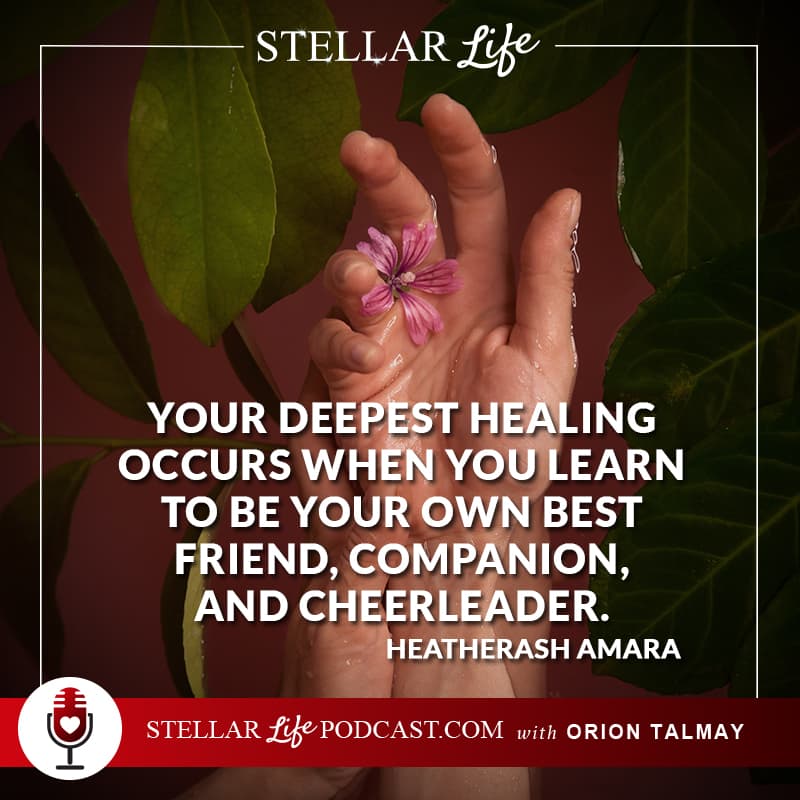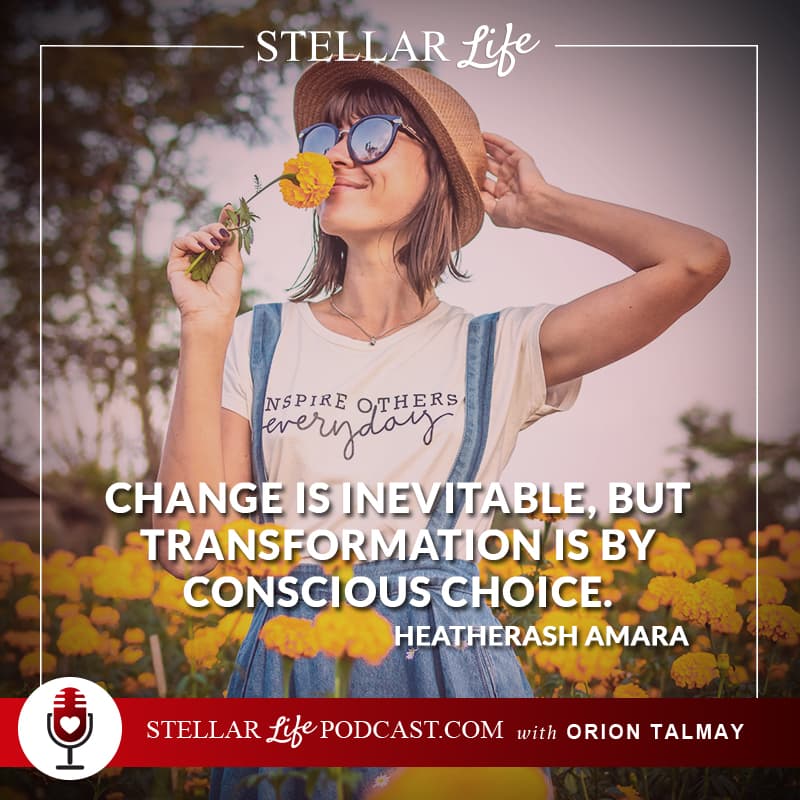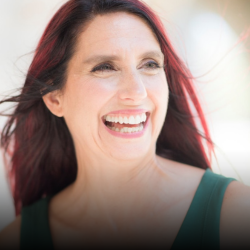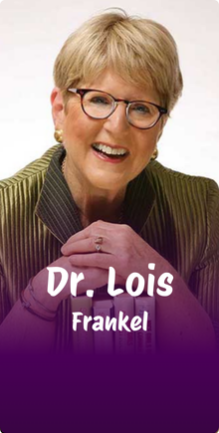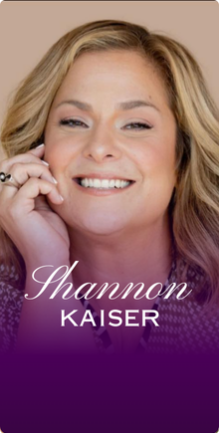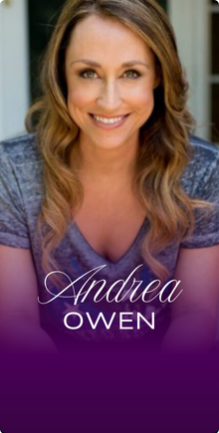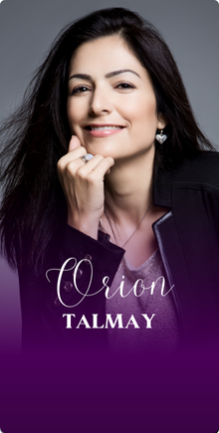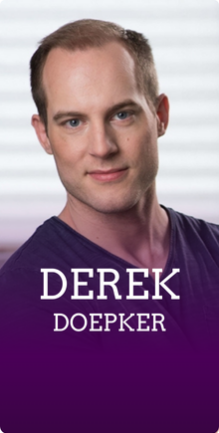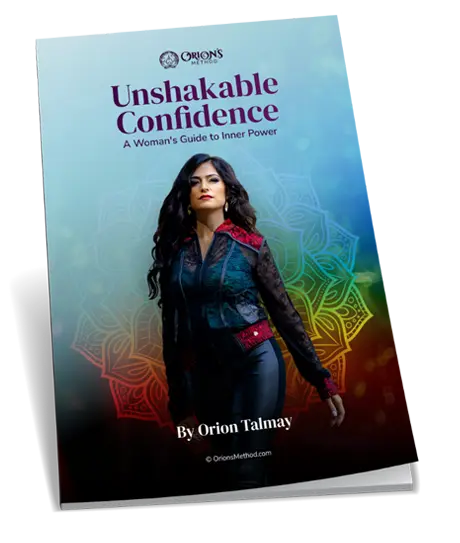
About Today’s Show
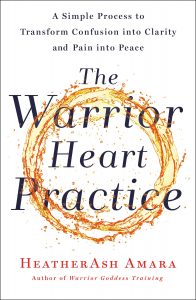
Hello, Heather Ash, and welcome to the Stellar Life podcast.
Thank you so much, Orion. It’s so good to be here.
It’s so great to have you here. I really enjoy your work in the world and everything that you do. Before we start, can you please share a little bit about yourself? Specifically, how did you find your passion? How did you become the person that you are today?
I grew up in Southeast Asia. When I first came to the States to go to college, I felt really disconnected. I ended up getting into politics really big because I thought that would give me a sense of place and I felt really passionate about what I was doing, but then I realized that wasn’t exactly what I was looking for.
I’ve been setting different spiritual traditions, which I had also done as a child, and came across European Shamanism which is where I started. I just got so passionate about learning about the cycles, the seasons, and doing a ritual as a way to create the transformation that I started sharing what I was learning with other people.
About seven or so years later, I had a dream about a teacher that I knew was going to change my life and that person was Don Miguel Ruiz. Really blessed to get to meet Miguel and apprentice with him for many years and I now travel and teach with the family.
Wow. I got to meet his son at a conference but I haven’t met Don Miguel Ruiz in person.
His work has really influenced what I do. My teachings are really a blend of European Shamanism and Buddhism from growing up in Asia as well as Toltec Wisdom.
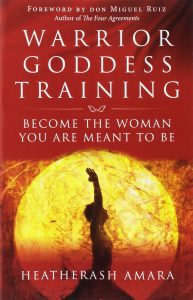
Nice. I guess your first bestseller was The Warrior Goddess Way?
Yeah, sorry.
Definitely, there are four different books in The Warrior Goddess Series. The first one is The Warrior Goddess Training, then The Warrior Goddess Way, and we have one now called Warrior Goddess Wisdom.
Okay. What’s the meaning of a warrior goddess?
A warrior goddess is someone who’s learning how to integrate these two qualities. What I’ve found with women is that often, we’re either an excess of the goddess or an excess of the warrior, and what we’re learning to do is coming to balance. The warrior energy is focus, clarity, and 100% commitment to your path. The goddess energy is about opening, creativity, and intuition.
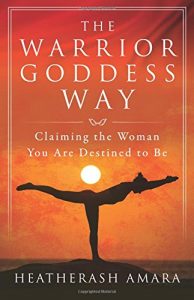
I see that the warrior energy is we’re going to go there and nothing will get in our way. The goddess energy is how can they have as much play and how can I bring people in with me on my journey. Not that we’re trying to get 50-50 warrior-goddess, we’re trying to find what’s our blend. Some of us are more goddess-oriented, some of us are more warrior-oriented.
That’s really interesting. I found your Facebook group after I launched my Awaken Your Inner Goddess: A Five-Day Challenge. That was all about the goddess for women who have a lot of warrior in them. It was all about the feminine connecting to your feminine.
In my past, I got really hurt, I got in my masculine and then, I had to learn to connect to that goddess part, that feminine, beautiful flow part of me, in order to feel free, be free, and attract the love of my life. Now, I’m married and have a four-month-old baby.
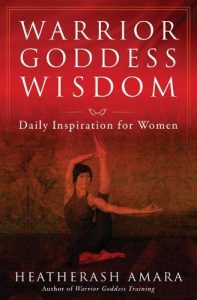
It’s interesting when you’ve given a name, when you’ve given identity to yourself and you say, “I’m a goddess,” you already start acting toward that identity, you already start shifting toward that identity. I also love what you said about integration because when I went through my journey, I was like, “Okay, now I’m in my feminine and it’s all good. I feel free and full,” but then, I really missed this kick-ass part of me that used to do martial arts, used to lift weights, be really strong, and be more of the warrior.
I figured out for myself, I was like, “Wow, I had this epiphany. Wow, it’s not one or the other.” It is an integration of both and like you said, it’s an integration to the level of what’s working for you because some days, you need more goddess, some days, you need more warrior, and sometimes, we’re at the same day. You can be a goddess in the morning and a warrior in the afternoon, and a goddess again. It’s really nice to have access to both.
Exactly. It’s really important for us to have access to both and to be able to use them skillfully where needed. Sometimes, people don’t understand the goddess and you need to talk warrior. Sometimes, they don’t understand warriors and you need to talk goddess, for example. That fluidity is really what my work is.
How did you integrate your own warrior goddess?
I would say I did that through a lot of experiences—some challenging, some incredibly beautiful—and really starting to find that balance like you talked about. I used to be really warrior as well, really focused, and really pushed myself.
Especially when you did politics.
Exactly, especially when I did politics and finding that balance again. When I think about the word “balance,” it’s not static. I will think about someone on a tight rope but there’s all this movement and fluidity.
That’s beautiful.
That’s something that I feel like I’ve been integrating through working with my teachers, and through just being in relationship to life. Life really teaches you how to be fluid if you’re paying attention.
You created a movement for women to integrate both and what were the results that you saw?
It was spectacular. It became the number one bestseller on Amazon. It was there for four years. The community then really started to grow because I knew I didn’t want to just put a book into the world. I wanted to give women support. Our Facebook group now, Warrior Goddess Women, has almost 30,000 women as part of it. They’re really supportive of each other. That’s what’s been really joyful to me is how the community is growing.
Sometimes, when they will come to workshops and they’ll say, “I’ve never been around women, I’ve always been around men. I’m really uncomfortable being here.” In the end, they have all these new best friends and they feel really comfortable because it’s the first time a lot of women have felt truly supported by other women rather than competitive. We tend to learn how to compete against each other and how to compare ourselves to others. When we change that, the beauty of how we’re able to see each other and recognize each other, just see women blossom when they’re held in sisterhood.
Power does not come from who you know, what you do, or how much money you have in the bank. It comes from blossoming into unconditional love for yourself and embodying joyful faith in your gifts. Share on XI love that. That is also my vision, to create this beautiful sisterhood of women that love, like, and support each other and do it worldwide. We need more of that, we need more of those pods of women that get each other. When I grew up, I used to be a tomboy and I used to hang out with 10 boys just like a buddy. I was part of the group.
I had to learn what it is to be a woman because sometimes it’s not safe to be a woman. Sometimes you get judged by not only society but specifically, women around you that don’t know how to support other women. It’s very important to have women see that it is safe, there is so much power and so much beauty when women come together and create something extraordinary together.
It’s so much fun as well. There’s so much joy that happens when women come together, and as you said, really feel safe finally.
What do you do during the workshops?
The first day we really talk about domestication and how women were domesticated in the agreement set. We make that limit us, we start to really bring those up. Then Saturday night, we do a firewalk, which is completely transformative.
I did a lot of these. I did a firewalk with Tony Robbins. I walked on glass, I broke an arrow with my neck, I broke a board from a telephone pole, all that. It’s really important. The firewalk for me was amazing.
It is really life-transforming. They have teachings over a couple of days, then have the firewalk, and then get to integrate it the next day. It creates a really powerful weekend for women. A lot of women leave completely different than when they showed up.
I bet. You unleashed them. I bet their families are like, “Who are you? What happened there? Where is the partner that I know or the mother that I know?”
Exactly. And then the work is how do you integrate and get back into the world. How do you integrate what you’ve learned? That’s really where the firewalk starts. There’s one thing about walking on hot colds, there’s another thing about going back into your life and changing your dream to match your inside, like finding who you truly are and learning how to create that in a world that’s a reflection of your authenticity.
I also like your roots in shamanism. When I was younger, when I lived in New York City, I did some sweat lodges with the Lakota people. It was really extraordinary. I like that connection to the earth, the elements, and all that. It’s so beautiful.
Your next evolution from the Warrior Goddess Way, Training, and all that is the Warrior Heart Practice. What is that? Is this specifically for women or is this a new evolution for everyone?
This one is for everyone. This is a book that I’ve been working on for six years and feels like it’s really the gift that I’m here to give for the world.
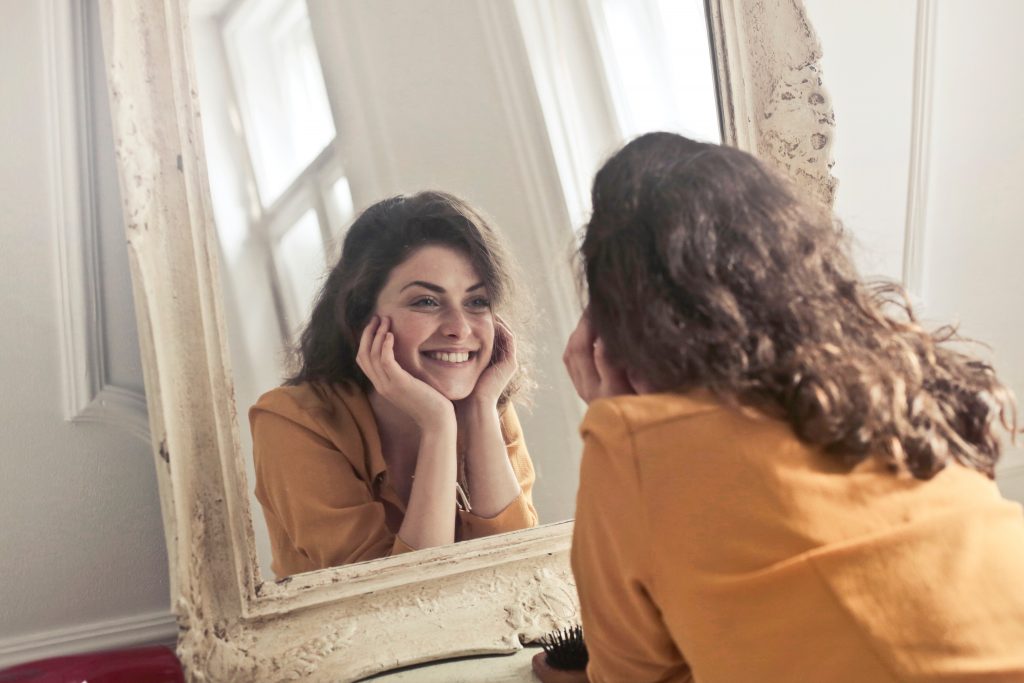
Six years?
Yeah, six years. Most books I do in like a year or two, this one just took a long time.
Wow. I’ve been working on my book for the last 3–4 years and I’m like, “Okay, there is hope for me.”
Absolutely. Some of them take longer than others.
For sure.
The Warrior Heart Practice is a really simple process to help people to get from their story the truth, that’s the easiest way to explain it. It’s really to help us step out of pain and confusion, and then to clarity and peace. Many of us have stories that limit us, which causes drama or suffering that we don’t even realize that we have. We also really haven’t been trained to separate out the feelings from the story. The Warrior Heart Practice helps us to separate out all the pieces so that we can come back into wholeness in a different way. The process is based on the heart that the heart has four chambers.
I thought it was very wise.
It’s that reminder that all the chambers of your heart are really important. You don’t go, “I like my left ventricle better than the rest of them.” This is the same thing with the Warrior Heart Practice is that recognition, these different aspects that we’re working, they’re all important. There’s not one that’s better than the other.
The four chambers of your heart practice are the feeling chamber, the story chamber, the truth chamber, and the intent chamber. What you do is when you’re triggered, when you’re upset you start by going into the feeling chamber by asking yourself, “What am I feeling?” What I teach people is how to get quiet.
We spend a tremendous amount of time often avoiding our feelings doing what I call exiting our feelings. Learning to have courage—this is why it’s the Warrior Heart Practice—to really stop. Not distract yourself, not blame others but really say, “Okay, what am I feeling now? What’s going on in my body?” Really show up with ourselves which is really what it’s all about.
The first place, if you’re triggered, upset, or you’re struggling with something is to stop, get quiet, and ask yourself, “What am I feeling?” The feeling chamber is the place we start and we often spend a tremendous amount of time exiting or avoiding our feelings. The courage of a warrior to go towards the feeling and really listen, “What am I feeling at this moment?” Let yourself settle in to just being with the feelings, not trying to change the feelings or think about the feelings, be with the feelings. That’s the feeling chamber.
I like that. When I traveled in India, I spent some time at Oneness University. One of the monks taught us. He said, “Let the tiger devour you.” It means, enjoy the emotion. Allow the tiger to devour you, go into it, really feel it. But then, he said, “Don’t stay there for too long.” The more you do it, you will learn not to spend too much time in the pain, in the grief, in the hurt, in the anger but you want to feel it because if you didn’t feel it, it’s just going to resurface again later on in life or it’s going to resurface as something in your body, a disease.
One of the most important things is to feel your feelings, especially for women. Usually, they tell you, “You’re too emotional.” If someone tells you you’re too emotional, then you say, “Thank you very much. I feel, I sense, I’m alive. This is my strength. Thank you, I am emotional and it’s great.”
Your deepest healing occurs when you learn to be your own best friend, companion, and cheerleader. Share on XYes. We often don’t have a lot of skills with how to feel the feelings without cycling them. We cycle them and we get caught in the story and you can keep a feeling going forever. You can have that emotion over and over again if you’re telling yourself a story about it.
That’s the second chamber.
That’s the second chamber versus repressing our emotions which we’re also often very good at. We’re learning how to come back into balance with our emotional body and it is separating out the feeling from the story. You’ll go into the feelings, and once you’ve allowed yourself to explore what you’re feeling, then you step into the story chamber. That question in the story chamber is, “What am I telling myself?”
It’s really important that you don’t spiritualize it, make it better, or blame yourself but to really look at what exactly am I telling myself about this situation. I think of it as when we go into the story chamber, we’re like an archeologist, we have to look at the layers and go through all the different layers.
What does that mean?
Often the story that we’re telling ourselves is a surface story. Often when you’re having an emotional reaction to something, you think it’s about this particular thing that happened, but it’s often something much deeper. It’s an older childhood wounding or a place that you haven’t really released the story around that’s calling you to look deeper.
For example, if you’re upset with your partner around something that they did and you’re having a big reaction, instead of going, “This is all about them, it’s their fault I’m feeling this way,” to stop and say, “What’s this story that I have?” A lot of times, what will happen is you’ll realize, “I have a story that if somebody is late, they’re going to leave me which is what happened with my father when I was young.” If you start paying attention, you can link the current story to the past and where the actual story originated or what you’re telling yourself that’s not true.
You asked yourself, “When was the time I felt that way? Is there a previous time in my life where I felt that way?” When you go deep, you actually see how it links to childhood memories. From what I understand, when you figure out a childhood hurt, a childhood trauma, how it links to different events in your life, and you heal that old trauma, it’s like a domino effect. It heals other traumas in your life that came after that, that stem from that origin trauma, origin story.
Yes, that skeptically means separating the feeling from the story, letting yourself have the feeling but also look at what’s the originating story. Sometimes people are like, “Why don’t I remember my childhood? I don’t know where this is.” It’s okay. If you’re willing to pay attention to your life and your reactions, you can see what the story is. You may not know exactly how it happened.
I had a story when I went through a really rough divorce. I realized I had a story that I wasn’t able to survive without my husband. I was like, “Where did that come from?” I realized it didn’t matter, I just had to name that story and look at where else I’d felt that in my life in order to clear it out. That’s important for people to realize. You don’t need to know the exact list.
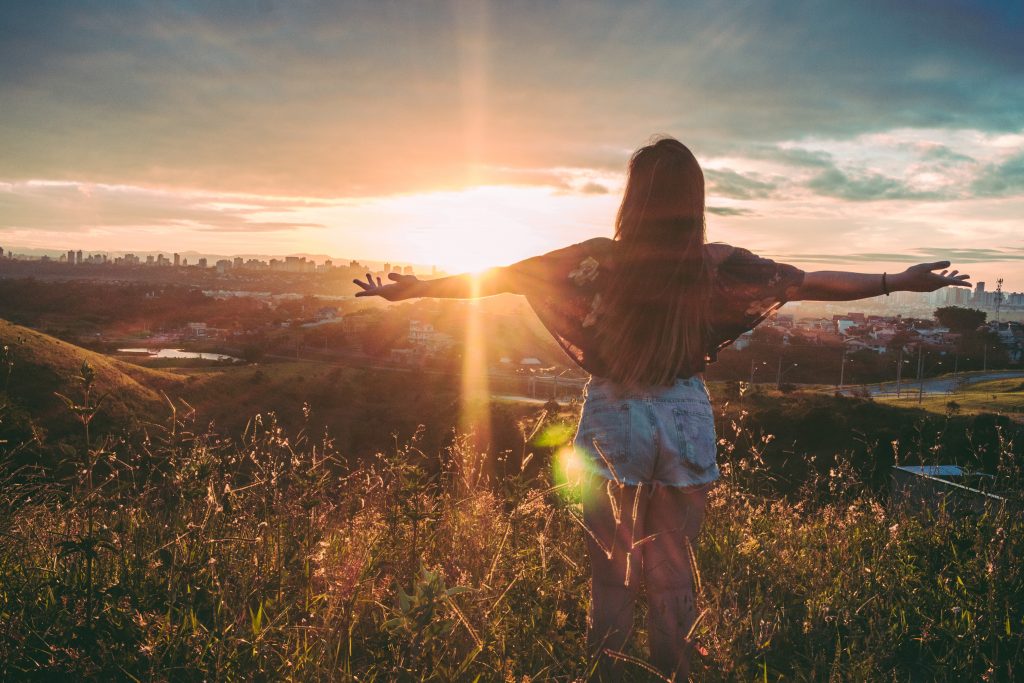
Just by awareness, it was cleared?
By awareness and by telling myself the truth, by really looking at what was true. The story can be really compelling. When you’re telling yourself the story over and over again, you think it’s real. You think that that’s what actually reality.
The next chamber, which is the truth chamber, then helps you to step away from the story and to look at what’s actually true here. What most of us do is we go into the truth chamber, we write a better story and we call that the truth. It’s important that you learn to differentiate between story and truth.
Right, but sometimes you can rewrite your old stories. I did 40 Years of Zen from Dave Asprey. Do you know anything about it?
Yes.
You’re in this beautiful place in the countryside, in Seattle, and you have a private chef that cooks you this amazing brain food and you take brain supplements five times a day because you’re going to take your brain through a triathlon from 0–100. Then, you sit and you do neurofeedback. In between, you have therapy sessions and you process old stories. I had this very painful story that came up and in my next session, I made a whole different story. I actually created a new memory that felt beautiful and empowered.
According to research, our memories are not true. We make up our memories like most of our childhood memories that we remember didn’t actually happen the way we remember them. It’s just that through our imagination and evolution, we created new stories. They even took a group of people and they told them a story that was fake that they told them, “This happens in your childhood.” The people are like, “Oh yeah, I remember that,” and they started describing the colors, the people that were there, things that happened, and it was a complete fake memory.
It’s really hard to pinpoint what were our true memories to our created memories. That’s another thing to think about because we can create whatever memories we want and that can be very liberating. We don’t need to completely ignore what happened, we can note something happened but we can, like you said, going back to the story, create a more empowering story for ourselves.
Yes, then you first have to be really honest about what the story is that you’re telling yourself. I just feel a lot of people bypass and think, “Okay, I’ll just rewrite a better story,” but this is why I created the practice. What I’ve seen is that it’s really helpful if you can’t do 40 days of biofeedback and deep work, you can do something like a Warrior Heart Practice.
The premise of 40 Years of Zen is that in doing that for 5 or 6 days, you get to a level of a monk that meditated for 40 years, the Zen Buddhist monk. I didn’t get there, but I got a lot of benefits. I’m not even close.
I bet you did. You can do it in your own home, you can do it in a way you can untangle years of stories that have caused suffering and learn to direct yourself towards what is true.
Change is inevitable, but transformation is by conscious choice. Share on XWhat is one practice that someone can do to untangle that in their own home?
To use the Warrior Heart Practice that I’ve been describing, to learn the difference between story and truth. When you step into the truth chamber, what you’re looking for is a feeling sense in the body. When you tell yourself the truth, one, it’s really simple. The moment that you say a sentence and if you qualify the sentence or you say, “But,” then back in the story. The truth is incredibly simple, one sentence, period. I always teach people; it has a period in the end.
When you tell yourself the truth, there’s a resonance in the body. You have this relaxation in the body that you’ll know it is the truth even if you don’t like the truth. It takes practice because we’re so habituated to telling ourselves stories. It takes practice to differentiate the story from the truth. But the qualifiers are, it’s super simple, it’s one sentence and that you have a feel of sense in your body.
I can say that the story is, he was late because he hates me and he doesn’t appreciate me the way he appreciates other people blah, blah, blah, and the truth is, he was late.
Exactly. He was late, period. Once you have that, then you go into the intent. The intent is, what do I want for myself? That intent chamber, that fourth chamber, isn’t about, I need him to change. The intent is, how am I going to change or what do I want to bring. Your intent is one word, to pick one word.
Give me an example of that.
It could be compassion, it could be the presence, it could be creativity, it could be anything. It’s one word that you want to dedicate yourself to, to help you untangle the story because if we don’t end here, you’re going to go back through the chambers.
Let’s do the boyfriend, this is perfect. He’s late, he doesn’t love me, he’s off with somebody else, we write this old story. He doesn’t respect me.
People are really getting into the drama of their stories. They believe their story so much that they torture themselves.
We’re good at storytelling. We’re experts at it. The truth is, he is late, period. Then, you would say, “Okay, what do I want for myself? What do I want more of?” You sit in that intent chamber and let yourself get clear about where you want to direct your energy and your attention. That’s what intent is, where you’re going to direct your energy and your intention.
Let’s say that you realize you want to love. You’re going to take the word love—I’m just making up any word—and then, what you do is you go back into the truth chamber and you hold love in one hand as how I like to think about, then you hold the truth in your other hand. The love, I want to love, I want to learn to feel love, I want to learn to give love, is my intent. And then truth, he was late, period. Then, you go back into the story chamber to start unraveling, how do you want to proceed in your life?
This is the beautiful thing about the story chamber. There’s no right way to do it. It may be you look at the story and go, “Wow. I don’t love myself and I want to learn how to bring love into my life.” It may be you realized that you have to have a really clear conversation with your partner. There won’t be emotion, it won’t be like, “You don’t love me.” There’ll be like, “Hey, I realized that I have this old story and what would help me is if you call me if you’re going to be late.”
Then, you go back to the feeling chamber to end. What you’re doing is you’re unraveling, you’re opening up space between the story and the feeling and then, by bringing your intent and your truth back into the story chamber, you can start seeing it really differently and realizing a lot of time is not actually even about the other person. It’s about yourself, your relationship with yourself.
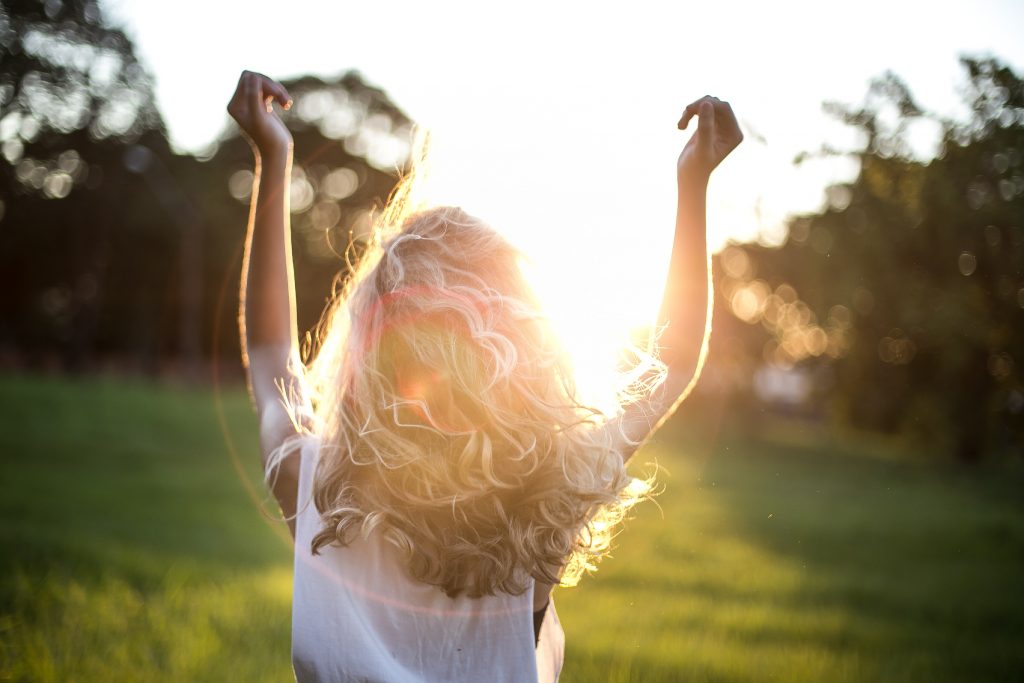
It’s usually is.
Exactly.
How did you come up with the idea of the four chambers? It’s a beautiful sequence and I like how you can go over it again and again and use it with whatever is happening in your life. How did you come up with that? Did you meditate? How did that come to life?
It came through many years of working with people. One day, I was talking to a friend of mine who had a story that he had been telling anybody who would listen.
We all know that friend.
Yeah, we know that friend. As I was listening, there were times when he’s sharing the same story and he was in so much pain around it. I had told him, several times, “That actually didn’t happen. I was there, here’s what the truth is.” The third time he shared the story, I just opened my heart and I just prayed. I said, “Is there any way I can help my friend? Is there any way that I can help this human that I love so much?” The process dropped in. That was six years ago.
Since then, I’ve been working it myself, I’ve untangled so many things in my own life in beautiful ways that would’ve taken me weeks or months, that took me 15 minutes, literally. A lot of different people have been working the practice so we’ve really honed it over the years. I’m really excited for the book to come out on January 7th, for it to finally be available.
I’m excited, too, and I have it. Do you have any spiritual practices that you do every day?
I’m in gratitude almost all the time, that’s really one of my main spiritual practices. It’s being in gratitude and being in love with what’s arising. I also meditate, I also do journaling but I would say, my main practice is gratitude and love in every moment.
What brings you joy?
Everything, truly. I can find joy in so many different things. One of my favorite things to do is to be in nature, to go out, be out hiking, or be sitting in someplace quiet surrounded by fulfillness and by nature.
That’s interesting because you are probably surrounded by so many people in your community all the time and you need that time to take care of yourself, being in peace and quiet, and then get all those beautiful downloads that you’re getting from the universe.
It’s good to have balance for all of us and I think all of us probably need more time in nature, we’re so used to being on our screens. I just bought 180 acres outside Santa Fe and I’m really excited to have a place to bring people.
That’s beautiful.
That’s been a long-time dream.
That’s beautiful. Let’s get from the story chamber into the intent chamber. What is intent?
Intent is your focus. I think of it as your North Star. It’s where you’re going to put your energy. When we have intent, we’re using our will to stay focused on what we want. Most of us don’t have clear intent so we’d get pulled by life. We get distracted, we get pulled into other people’s dreams. Intent allows you to stay steady and come back to what was I putting my focus on.
How do you create your intent? How does that work in the process?
Once you know the truth and you go into the intent chamber, you’re going to pick one word. I found that’s one of the easiest ways for people to pick a quality that they want to work on and to use that. Let’s say that you have the intent that you want to bring more compassion versus the intent that you want to be truthful. That might lead to two very different actions in the world.
Let’s say you want to hold compassion, you may go back into a situation and realize the other person doesn’t know what they’re doing, that they’re acting out of their own wounding, and you’re able to really open your heart and just be with them, and not need to change their story at all. Versus maybe you pick the intent truth and you realize you have not spoken the truth in your life, that you’ve tended to repress yourself. You might then go into a situation and realize, “Wow. I’ve helped create this situation because I haven’t spoken my truth.” That would cause you to then speak your truth and be clear about what your experience was.
Knowing what your intent is will help you navigate in a clear way to untangle things in your life because you now have a focus versus going in a lot of times, I know when I was trying to untangle through, I’d be like, “I don’t know how to do it.” But I found for myself when I had that word and that quality, then that would help me know what the next action to take because I will ask myself, “What would compassion do here? What would the truth do here?” It’s like having a relationship with a being and a guide that’s going to help you untangle the story.
That’s nice. That reminds me sometimes when my husband asks me, “What would the Dalai Lama do?” and I’m like, “I’m not the Dalai Lama. I’m not Mother Teresa. I’m just me, okay?”
There’s a way for me that what we’re learning how to do is to say, what would Orion do? What would the highest expression of Orion do? Instead of comparing ourselves to what we think we should be doing, that we’re able to come in and say, “Okay, how do I grow myself into who I want to become?”
I love that. Who do I need to become to attract what I want? There is one concept that I didn’t touch on that comes way earlier in the process. You’re talking about the concept of the big soul and little soul. Can you expand a little bit about that?
Yes. This is a concept that I learned from Don Miguel early on in my training with him. The big soul is our connection to all of life, to the cosmos, is that place of love, and knowing that we’re not separated. When we’re in our big soul, we’re connected to everything.
I had the pleasure of experiencing that completely and utterly in India. It was amazing. I felt that there was no separation with me, with myself, the walls, the stray dogs, nothing. It was such a vivid, sensual experience. I feel like an awakening. It comes and goes in stages. It’s not that we stand this super high awaken state our whole life. You experience a glimpse into the 99% of what the reality can be and then, you go back to being a human.
It’s true. We always have access to that big soul but we always don’t know how to access it. That big soul doesn’t go anywhere. Everyone’s had experiences of the big soul before. What keeps us away from it is what happens with the little soul.
The little soul is a part of us that feels separate. It’s our ego, it’s our personality, and we’re little. If you look at little kids under two years old, you have a child so that you get to see the connection, right? Their little soul and their big soul are totally connected. I think of it as the little soul is holding hands with the big soul. That part of us is able to talk to the big soul.
The big soul is really bright and really strong, and it’s constantly saying, “Everything is good, you are loved.” You see that in children. They’re so happy, joyful, and curious. That’s what happens when we connect our little soul with our big soul.
The warrior energy is focus, clarity, 100% commitment to your path. The goddess energy is about opening, creativity, intuition. Women are either an excess of goddess or an excess of warrior, that’s why it’s crucial to find the balance. Share on XWhat happens pretty early on is that we start learning who we’re supposed to be. We start being domesticated. In a lot of ways, domestication happens as a reward and punishment. What the punishment is, is I’m going to withdraw love from you. We’re very much based in a culture right now and a dream, where the fear is I’m not going to be loved. So what we do is we start trying to be something else, we start trying to get love on the outside. The little soul then starts taking over, making up all these rules, and trying to follow the rules. How I envisioned it is that the little soul disconnects from the big soul and feels lost.
It sounds so terrible.
It’s so hard, but it happens to all of us. The gift is, the big soul hasn’t gone anywhere. Basically, all of us are almost like little kids that have gotten lost in the market and then we try to figure out how to make our lives make sense and how to stay safe. It’s all about safety.
You’re the person that makes the announcement in the market?
“Over here.” Exactly.
“Over here, there’s a little boy that’s missing.”
Exactly, and that big soul is there. It’s so beautiful when our little soul and our big soul reconnect because we then become creative, open, intuitive, curious, and joyful again. We connect, we disconnect, we connect, we disconnect. It’s a process, learning how to remember that larger truth.
Also, love the little soul. Love the little lost part of us that’s struggling, that’s scared. I found that the most powerful medicine. Instead of fighting the little soul, or thinking that it’s bad, or trying to get rid of it, to just be like, “Oh sweety, come here, you’re scared.” That changes everything. When we love and honor, I am the big soul and I am the little soul. I’m also that scared person that acts out sometimes, but then I’m responsible for that part of myself and learning what it needs.
I feel that. If people will see that and take responsibility for that, they’ll be so much happier. When you point fingers, when you blame everybody around you, when you blame your parents, your childhood, the person at work, everything, even the seminar you went to, then you are giving away your power. But when you take responsibility, you have the ability to respond to life in a more powerful way and then you are strong. Then you are a warrior, then you take your power back, you don’t give it to other people. Your life doesn’t happen because of other people or situations. Your life happens because of who you want to be in the world.
Exactly. It takes time to reclaim that power. It’s an uneven process. The hope is that, “Well, I’ll just get it, I’ll just wake up, and it’ll be easy.” The truth is that we wake up and we fall back asleep again, we remember, we forget. Sometimes the stories are really deep. What I talk about in Warrior Goddess Way is this idea of ripening, that what we’re learning how to do, is to ripen our stories. Some stories are not ripe, we’re still attached to them, we’re not ready to change it. Some stories are ripe, where we’re just like, “Oh, that’s not true,” and they just fall apart.
To ripen a story is just like to ripen fruit. There are three main ways, put it in the sun, put it in a brown paper bag, or put it with other fruit. Putting it in the sun for me is telling your story to somebody who’s like sunshine, which is just like a therapy for.
It’s such a beautiful metaphor.
Isn’t it beautiful? If somebody just loves you, basically they’re holding the truth while you’re telling the story. They’re just like, “Yep, I see you. I still love you.” That can completely change the story. It can free you because you realize the shame goes away. The other is the brown paper bag, which stops telling your story. Sometimes we keep the story going because we’re talking about it all the time and we’re forcing it. Brown paper bag is actually, go inside, get quiet, let yourself ripen the story by going into stillness. The third way is to find other people that are ripe. If you’re trying to ripen a story around relationship, around finances, you find somebody who’s ripe in those areas.
Right. I think there is a fourth way? I think sometimes, it’s not ripe until it’s ripe. Sometimes we need the time.
It was patience. Exactly.
We need the time, the distance from the story, some kind of an evolution to look back and deal with that story. We can’t always deal with it. Almost like with forgiveness, we can’t just forgive to forgive, sometimes we do need to give ourselves the grace of having some time to digest it, look at it, give ourselves some love, and then we are ready to deal with it. But do not delay. When you’re ready, just go for it.
Yes. Patience is always a healing work. We all have to learn patience and the timing of things. Sometimes, as you said, they do take longer, but time is a beautiful healer.
We talked about the little soul. In this day and age, with social media and us comparing ourselves to each other, that person has this, this person has that, I’m not as good as this person, and I wish I was there, but I’m here. You’re talking about the art of stalking yourself. What does that mean?
If you think about being a cat, they stalk their prey over days. They know where their prey sleeps, where it feeds, what it’s movements are, and they wait. Cats are incredible hunters, they’re incredibly patient, they’re stalking their prey.
Do you have cats?
I don’t right now. I’m on the road, way too much to have any animals. But it’s true, domestic cats were the same way.
I used to have one.
Did you? You know, if you have a little feather and you’re playing with your cat, the cat will bring 100% of its attention onto that thing and then they attack. If they miss, they don’t then beat themselves up, or feel bad about themselves. They’re just like, “I missed. I’m back.” When they go back, they’re 100%. For me, that’s warrior energy. Like that, “I’m back 100%, even if I missed, even if I make a mistake, even if I fail.” There isn’t this, “This is terrible.” There’s no story, it’s just, “I’m back.”
What we’re learning to do is stalk ourselves with great love. That stalking is, “What are my thoughts? What am I feeling? What’s going on? How do I respond?” We’re gathering information about ourselves. For me, really, learning to stalk yourself is about becoming intimate with yourself. You’re getting to know who you are, how you respond to things. Not who you wish you were, but really, how are you engaging in the world. When you’re honest with yourself in that way, you stalk and you gather the information, that’s when you can start creating big change. Instead of just washing in and trying to fix something, you’re like, “Oh I get it, when this happens, I do, ‘Okay, why is that?’” So you get really clear about things.
Many people will get lost in stalking other people, or even stalking their own dreams. In a way, it serves them because then they don’t have to look inside. They don’t have to have this 100% focused warrior energy that goes internally into, “Who am I? What am I doing? How can I improve?” It takes a lot of effort and a lot of discipline. It’s easier to go on Facebook, go on Instagram, do all that and just say, “I wish, I wish, I wish.” Instead of doing that process of stalking yourself, which I had never heard of and it sounds so cool.
It’s a really powerful practice. It really is about getting to self-responsibility and self-love. A lot of people think of responsibility as almost like, “I have to punish myself if I do it wrong.” When I’m talking about it, it’s really unconditional love for self that we’re learning how to show up and be present with who we are now, to love ourselves unconditionally, and to choose how we want to grow ourselves and move forward.
When you unconditionally love, you don’t withdraw your love. Stay connected to yourself. For a lot of women, especially, the main pain is that we’re abandoning ourselves over and over again. Comparing ourselves to who we think we should be, or who we were in the past, to other people. So painful. Stalking yourself is really falling in love with who you are and staying steady with yourself, not abandoning yourself.
What are some ways to fall in love with yourself?
To start small. Remember, exercise is a gift. People need to look in the mirror.
Mirror Work, Louise Hay’s mirror work.
It’s just really simple to everyday, to look in the mirror and say, “Hello.”
You know my son, when he looks in the mirror, every time, if he’s crying, I just put him in front of the mirror and he starts smiling. It’s the cutest thing.
“Oh hi, it’s you.”
It is just the cutest thing. He’s such a little teacher. I was like, “Wow, when was the last time I did that?” I taught it to this day and I taught people mirror work. Sometimes even I, forget it. It doesn’t matter what you teach, you tend to forget sometimes.
It’s learning to fall in love with yourself is that little thing. To learn that, one of the key things is to really watch how you judge yourself.
Your heart is not a fragile, delicate bird, but a resilient, powerful hawk learning to fly. Share on XThat’s the worst.
It’s terrible. I always invite people to say, “Okay, watch yourself judging yourself, without judging yourself that you’re judging yourself. Just be curious that you’re judging yourself.”
Good luck doing it.
It takes practice. Then really look at, “What would I be telling somebody else?” If somebody else had done this thing, what is it to them? Most of the time, we don’t judge others as much as we judge ourselves. You could start to train yourself like, “Okay, anybody else I would be doing this to myself. I’m punishing myself. What would it feel like to not punish myself? What would I do?”
It’s incremental. It takes time, but it changes your life. Who cares if it takes time? Just keep trying, just keep shifting your attention over and over again. This work is so much about your awareness and where you’re putting your awareness, courage, perseverance, and being steady with yourself.
How do you claim your warrior spirit?
One way is to use other people as role models. And prepare yourself again to be inspired by, what’s the quality of the warrior that you’re looking for and then look in books, in movies, in other people that can be real people, or fictional people, of what’s the quality that you want to gain. Then start to bring that into your body. It’s really powerful. There’s a lot of traditions that use this method in a lot of different ways, but it’s that place of who inspires you. Don’t use them against yourself, use them as a way to pull that quality into yourself, because if you can see it in somebody else, you have it inside of yourself as well.
Delighting me is delighting you. Delight in seeing you as a reflection of myself. Where can people find you, learn more about your work, attend your workshops, join the Facebook group, get your new book that is coming out right now, and all that good stuff?
The best way is the website, it’s heatherashamara.com. I’m also on Facebook, Instagram, and all the places, but all the events, the information of the book, where I sell them everywhere, so online and at your favorite bookstore, you can check it out there. For the women, the group online is Warrior Goddess Woman, you can join that as well.
There’s a lot of wisdom in the Warrior Goddess Woman.
Thank you so much for this extraordinary interview and this phenomenal method that you shared with us. Before we say goodbye, what are your three top tips to living a stellar life?
Show up with yourself at the best moment, that’s first of all. Have fun, enjoy everything in life, and do more of what you love.
I love that. Well, thank you so much. I really appreciate you. This was awesome. Thank you.
Thank you, Orion, take care.
Thank you. Thank you, listeners. Remember to show up, have fun, enjoy, and do more of the things you love. This is Orion, until next time.
